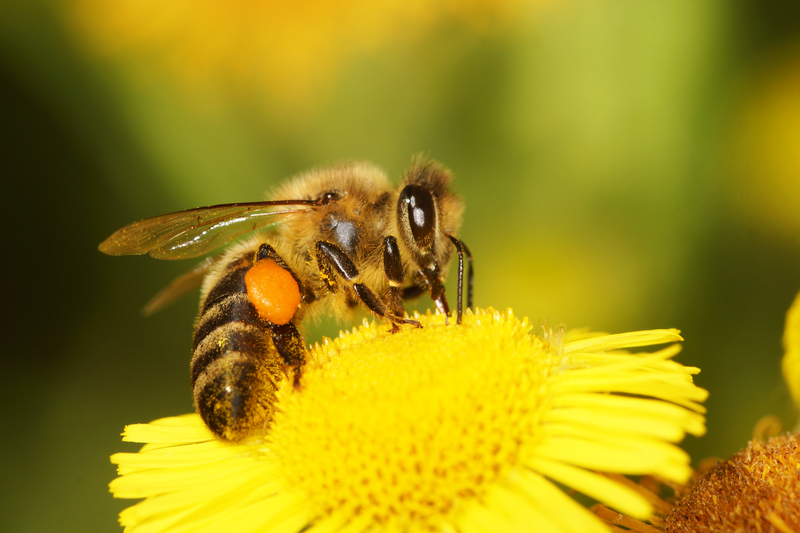Snow-Ready Gardens: Expert Tips for Plant Winter Protection
Posted on 01/10/2025
Snow-Ready Gardens: Expert Tips for Plant Winter Protection
Winter can be both picturesque and perilous for gardeners. As snow blankets our landscapes, plants face frosty conditions that can stress or even kill them. With a little foresight, your beloved garden can thrive through the coldest months. This comprehensive guide offers top expert tips for plant winter protection, so you can confidently create a snow-ready garden that wakes up vibrant in spring.
Understanding Plant Vulnerability in Winter
Before diving into solutions, it's crucial to recognize why plants suffer in winter. Factors such as moisture loss, cold snaps, snow weight, ice storms, and fluctuating temperatures all contribute to winter stress. Not all plants are equally susceptible -- understanding the specific risks in your region will help you tailor a protection plan for your unique garden.
Common Winter Stressors for Plants
- Freezing Temperatures: Damage roots and above-ground parts.
- Ice and Snow: Break branches, flatten stems, and damage evergreen foliage.
- Desiccation (Moisture Loss): Especially impactful for broadleaf evergreens.
- Winter Sun: Causes thaw-refreeze cycles that can crack bark.
- Salt Damage: From deicing roads or sidewalks.
- Windburn: Winds rapidly dry out exposed leaves and stems.

Preparing Your Garden for Winter: The Basics
Getting your garden snow-ready starts long before the first flake falls. Follow these essential winterizing steps for optimal plant winter protection:
1. Clean Up and Mulch
- Clear debris: Remove leaf litter, dead annuals, and diseased branches to minimize pests and disease.
- Mulch generously: Apply 2-4 inches of organic mulch around the base of your plants. Mulch acts as a thermal blanket, balancing soil temperature and retaining valuable moisture.
2. Water Deeply Before Freezing
Dry roots are more prone to damage. Deep water your plants a few days before the ground freezes, especially newly planted shrubs and trees, evergreens, and perennials. Winter winds increase dehydration, so hydrated roots fare much better in freezing conditions.
3. Prune with Purpose
Pruning before winter can reduce snow damage, but over-pruning leaves plants exposed to cold. Remove only dead, diseased, or crossing branches. For certain species, wait until late winter or early spring to perform significant pruning. Do not prune spring-flowering shrubs (like lilac) late in autumn, or you'll lose blooms!
The Best Protection Techniques for Snow-Ready Gardens
Below are the most effective strategies for protecting your plants from snow and winter weather. These expert-recommended methods will help your garden survive -- and thrive -- through harsh winters.
1. Mulch: Your Garden's Cozy Winter Blanket
Mulching is an invaluable tool for winter plant protection. A good mulch layer insulates roots, moderates soil temperatures, and helps retain moisture. Here's how and where to mulch:
- Avoid placing mulch directly against trunks or stems to prevent rot.
- For perennials and shallow-rooted plants, mulch as soon as the soil freezes but before heavy snowfall.
- Use organic mulches like shredded bark, straw, pine needles, or chopped leaves for environmental health.
- Renew or fluff mulch periodically through winter, especially after heavy wet snow.
2. Protecting Evergreens from Winter Burn
Evergreen plants transpire moisture -- even during winter -- which can cause brown, crispy foliage, also known as winter burn. Use these expert tactics:
- Windbreaks: Erect burlap screens on the windward side of evergreens, securing the fabric to stakes.
- Anti-desiccant sprays: Apply in late fall to create a water-retentive barrier on broadleaved evergreens.
- Wrapping: Gently wrap small evergreens in burlap. Avoid plastic, as it traps heat and moisture, causing mold.
3. Tree and Shrub Protection from Snow and Ice
Heavy, wet snow and ice can bend or break branches. To prepare:
- Stake vulnerable young trees: Use flexible ties to allow some movement while stabilizing the trunk.
- Tie upright branches: Use soft twine to gently bind multiple leaders on columnar shrubs or trees, like arborvitae, together for the season.
- Remove snow carefully: Brush off snow with an upward motion using a broom. Never shake icy limbs, as they're prone to snapping.
- Don't use salt near plants: Salt can severely damage roots. Shovel snow to areas away from plantings.
4. Insulate Tender Perennials and Roses
Many perennials and roses benefit from extra insulation during harsh winters. Some tips include:
- Rose protection: Mound 8-12 inches of mulch or soil over the base of hybrid tea and floribunda roses. After the ground freezes, cover with straw or evergreen boughs.
- Cloche covers: Use store-bought or homemade plastic cloches, upside-down buckets, or wire cages wrapped in burlap for perennials and tender plants.
- Remove covers gradually: In spring, remove protection after the danger of frost has passed, to avoid overheating and encourage new growth.
5. Raised Beds and Containers in Cold Weather
Containers and raised beds lose heat more rapidly than in-ground beds. Here's how to invigorate your snow-ready container gardens:
- Group pots together: Place pots in a sheltered spot, close to the house or garage, and wrap them in bubble wrap, burlap, or old blankets.
- Elevate containers: Keep pots off direct soil or snow by setting them on bricks or pot feet to improve drainage.
- Consider overwintering indoors: Move borderline hardy or valuable potted plants into unheated garages, basements, or enclosed porches as needed.
Specialized Tips for Delicate Plants
Some prized or exotic plants may need dedicated care to survive freezing, snow-laden months. Pay special attention to the following:
1. Wrap Fig Trees and Tender Shrubs
- Fig trees (and other borderline hardy shrubs): After leaf drop and before hard frost, wrap with layers of burlap or frost cloth filled with straw or leaves.
- Cover crowns: For plants like tree peonies, pile a mound of mulch or compost over crowns once the ground has frozen.
2. Caring for Bulbs
- Hardy bulbs: Generally require only a light mulch to prevent heaving from freeze-thaw cycles.
- Tender bulbs (such as dahlias or gladiolus): Dig up before the first hard frost, let dry, and store in peat moss in a cool, dark location.
3. Protecting Lawns in Snowy Climates
- Stop mowing: Let grass grow slightly taller before winter to protect crowns.
- Avoid heavy traffic: Compacted snow leads to snow mold and dead patches. Create designated walkways and avoid repeated foot traffic on snow-covered turf.
Gardening Under Snow: Maximizing Winter Interest
Not all winter preparation is about defense! Design your garden for winter beauty by making smart plant choices and employing garden features that shine under a snowy cloak.
- Plant winter-bloomers: Witch hazel, hellebores, and snowdrops flower in the cold and push through snow for welcome color.
- Showcase structural plants: Ornamental grasses, red-twig and yellow dogwood, and seedheads of coneflowers offer striking silhouettes against snow.
- Use evergreens for year-round greenery: Boxwood, holly, pine, and spruce bring substance and offer shelter for winter birds.
- Garden ornaments and hardscape: Arbors, trellises, and benches gain dramatic new appeal in snow. Place these features for maximum winter visibility.
Regional Adjustments for Snow-Ready Gardens
Winter's impact differs by climate zone. Successful plant winter protection depends on understanding your local USDA zone and choosing plants accordingly:
- In very cold areas (zones 2-5): Choose hardy native species and limit tender exotics. Provide extra mulch and wind protection.
- In moderate/mild winter zones (zones 6-8): Melt/freeze cycles are common. Protect plants from erratic thaws, and guard against root rot with well-drained soil.
- Urban microclimates: Concrete, brick, and buildings create heat islands. Adjust your plant protection plan for warmer spots -- and for increased salt risk.
Checking Hardiness and Plant Placement
- Research hardiness ratings: Know your zone, and select plants with proven winter performance for your area.
- Strategic placement: Place vulnerable plants in protected spots, such as against a south-facing wall, for added warmth.
- Raised beds and good drainage: Prevent winter root rot by avoiding poorly drained locations.

Frequently Asked Questions About Plant Winter Protection
Should I cut back all perennials before winter?
Not necessarily. While it's fine to tidy the garden, many perennials benefit from leaving stalks and foliage through winter to trap snow and provide shelter for beneficial insects. Cut back in spring for a healthier, more sustainable garden.
How do I know if my plant is winter-hardy?
Check the USDA Hardiness Zone for your region and verify that the plant label (or nursery information) lists it as hardy to your zone number or lower. When in doubt, consult local garden centers or your agricultural extension office.
What should I do if I see ice forming on my shrubs?
Never attempt to remove ice by hand or by shaking. Allow it to melt naturally; trying to chip or break it off can cause irreparable plant damage.
Is it too late to mulch after the ground is frozen?
It's always best to mulch before the first hard freeze. However, adding mulch after the ground is frozen can still help insulate roots and prevent further freeze-thaw cycles. Just avoid excessive disturbance of the soil.
Conclusion: Embrace the Snow With Confidence
Winter doesn't have to spell the end of your garden's beauty or success. With these expert tips for snow-ready gardens, you can anticipate challenges, take proactive steps, and ensure plant winter protection no matter how fierce the weather. With just a little planning, your plants will not just survive -- they'll thrive, emerging with renewed vigor at spring's first thaw.
Now, arm yourself with these practical tips, and get ready to enjoy your snowy landscape while knowing your garden is safe, snug, and waiting to bloom again.
Happy gardening, winter warriors!

